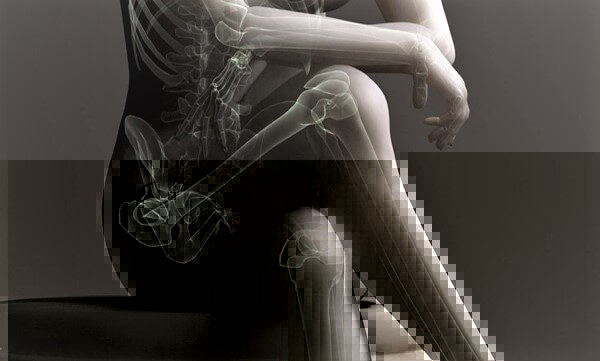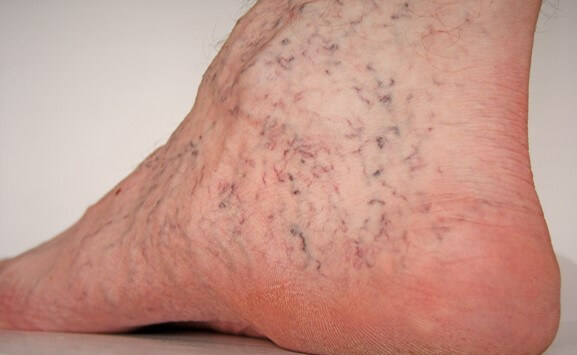We as individuals,have a lot of small negative routines that we are not actually conscious of.From cracking acne to hunching over our desks, almost all of us have got a couple of patterns we understand we must crack, and a lot more we are not concentrating to.
For example, did you realize that you need to never cross your own legs?
The majority of individuals don’t think twice about tucking one leg over the other, but it’s really a terrible habit that can trigger long lasting destruction.
Crossing your legs every now and then isn’t dangerous, as long as you take breaks, but pretzeling your legs up for hours on end is not good for your body.
Your computer screen is fine in small doses, but can hurt your eyes if they’re overexposed. The same basic principle holds true for crossing our legs.
A little won’t hurt you, but if you never cross your legs in the first place, you’ll be better off in the long run.
What Happens When You Cross Your Legs?

People everywhere seem to share the same basic desire to cross their legs.
Lots of us seem to do it because it’s comfortable; it’s a protective posture that leaves us feeling less vulnerable.
For many women, it’s a learned behavior, taught to girls at any early age as a mechanism to preserve modesty while wearing a skirt.
Today, that seems antiquated, but the behavior persists.
It’s also a space-saving maneuver, when we want to make ourselves seem smaller or make room for others.
So, what’s so bad about it?
1. Nerve Damage

Sitting cross-legged on the bus for an hour isn’t going to do permanent damage. Sitting cross-legged at your desk for hours every day might.
When you compress your legs, you are putting pressure on all the nerves, tissues, and blood vessels at the spot where they meet.
At first this just causes pins and needles. However, over extended periods of time, the pressure can cause nerve damage in your extremities from blood failing to reach all areas.
That, in turn, can cause nerve pain in some areas and lack of sensation in others.
2. Elevated Blood Pressure
When you cross your legs, you are temporarily compressing the big blood vessels in your lower extremities, forcing blood to flow more slowly throughout these areas.
Ultimately, the slowdown of blood flow leads to a temporary spike in blood pressure — part of your circulatory system is cut off, meaning the blood backs up and presses harder again the other vessels.
This jump in BP isn’t dangerous in a young healthy person, but has the potential to cause serious harm and heart trouble in someone who already has elevated blood pressure.
3. Deep Vein Thrombosis

Deep vein thrombosis, or DVT, is a condition where a blood clot forms far inside the muscle of an extremity, often the lower leg.
This painful and dangerous condition is much more likely to happen if you are sedentary for long periods of time, particularly if your blood flow is restricted by, say, crossing your legs.
Sluggish blood can build up into a life-threatening clot from the pressure, particularly in individuals who already have risk factors like smokers and pregnant women.
4. Damages Posture
Sitting with your legs crossed causes a ripple effect that extends up your back and neck.
When you cross your legs, you make a smaller and less stable base to sit on, because you’re perching your buttocks unevenly. Your body overcompensates by hunching over to maintain balance.
Over time, this habit can lead to persistent bad posture, and difficulty straightening up and standing tall.
5. Back Pain

Crossing your legs is actually bad for your whole spinal column.
That’s because crossing your legs tweaks your entire pelvis up on one side, which crooks the spine in an unnatural position.
Habitually sitting with crossed legs can damage your spine over time, particularly if you skew strongly to one side every single time.
Pain that starts in the low back can radiate up to the neck, or out, causing sciatic pain in the legs and arms.
6. Spider Veins

Spider veins and varicose veins are unsightly lumpy bluish veins that show through the skin.
They can be painful, but are more of a cosmetic issue than a medical one.
Sitting or standing still in one position for long hours can put pressure on the blood vessels until they begin to bulge over time.
The same is true of crossing your legs, which traps blood in the lower legs and creates pressure.
If you always cross your legs the same way, you might notice them in one leg first.
Read also: 5 Things You Should Never Do After Eating!
What Do I Do?
So how do you break the bad habit and quit crossing your legs?
Well, the good news is that you don’t have to stop entirely; you can wean yourself off the habit.
Try setting a timer for yourself every fifteen minutes to remind yourself to take a five-minute break to change position, and work your way up from there until it feels more comfy to sit with your legs uncrossed all the time.
Meanwhile, if you do notice any of the medical symptoms listed above, consult a doctor and get treatment immediately.
Do you cross your legs?
 Freshsein
Freshsein